This article explores the concept of crypto volatility and why volatility is important in the growing cryptocurrency market.

The great market crash in 2018 is a hard lesson for many in the cryptocurrency market on the extreme volatility of cryptocurrencies. Within a space of 2 years, the prices of cryptocurrencies have vigorously fluctuation from end to end, with many considering cryptocurrencies to be a highly unstable market full of speculation and uncertainty. The first and largest cryptocurrency based on market capitalization – Bitcoin – experienced massive growth in 2017, growing from $700 to almost $20,000! That’s a staggering 27,000% rate of return in merely 12 months.
It is no surprise that many jumped on the cryptocurrency bandwagon. However, the market soon became too unstable once it grew to massive levels, and thereafter experienced a massive collapse for the whole of 2018. The market capitalization of cryptocurrencies fell from an all-time high of $813 billion to a mere $100 billion, with the general prices of all coins falling close to 90%.
Cryptocurrencies are seen as a complex, disruptive and elegant technology that has made lots of people rich. It is therefore not surprising that many are attracted to the allure and risky state of cryptocurrencies.
Let us explore the important market concept of volatility and how it is an integral component in the cryptocurrency market.
(See more: 4 Types of Coins to Diversify Your Crypto Portfolio & Manage Risks)
What is Volatility
In traditional finance, volatility is defined as the statistical measure of dispersion of an asset’s price. Simply put, volatility describes the extent to which an asset’s price fluctuates over time. An investment is considered volatile if its prices move aggressively up or down daily, as can be seen in the cryptocurrency market. Here’s an illustration of volatility:
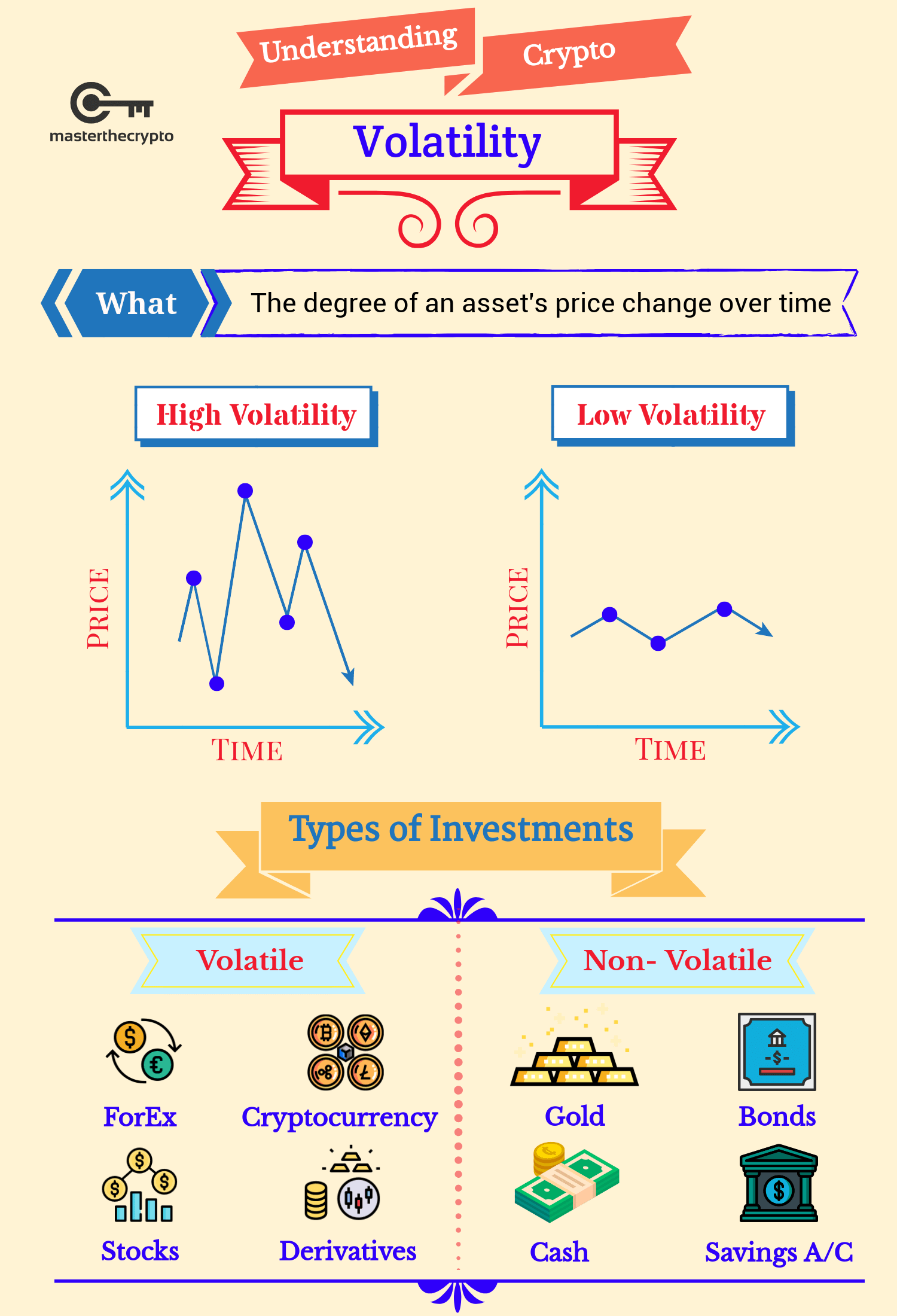
Low-volatile assets such as gold or government bonds are extremely stable, with prices fluctuating in a steady manner and doesn’t change as frequently. High-volatile assets, on the other hand, moves up and down in value rapidly and more aggressively.
(Read also: Will A Crash in Bitcoin’s Price Lead to Its Demise?)
Volatility and Risk
Volatility is a vital concept to understand since it measures risks. For investors and traders, understanding their risk tolerance is always the first step before engaging in any form of investments. Different individuals possess a different level of risk tolerance, and this affects their choice of investments. For instance, a 50-year-old retired pensioner would probably have a very low-risk tolerance since their main priority would be to preserve their wealth. The types of investments they would be looking at would be pension funds, mutual funds, low-yielding government bonds or highly-stable blue-chip stocks that pay-out a sizable dividend income. Alternatively, a 25-year-old fresh from university would probably have higher risk tolerance and would consider investing in riskier investments that include cryptocurrencies and technology stocks.
Here’s a look at the varying levels of risk appetite.
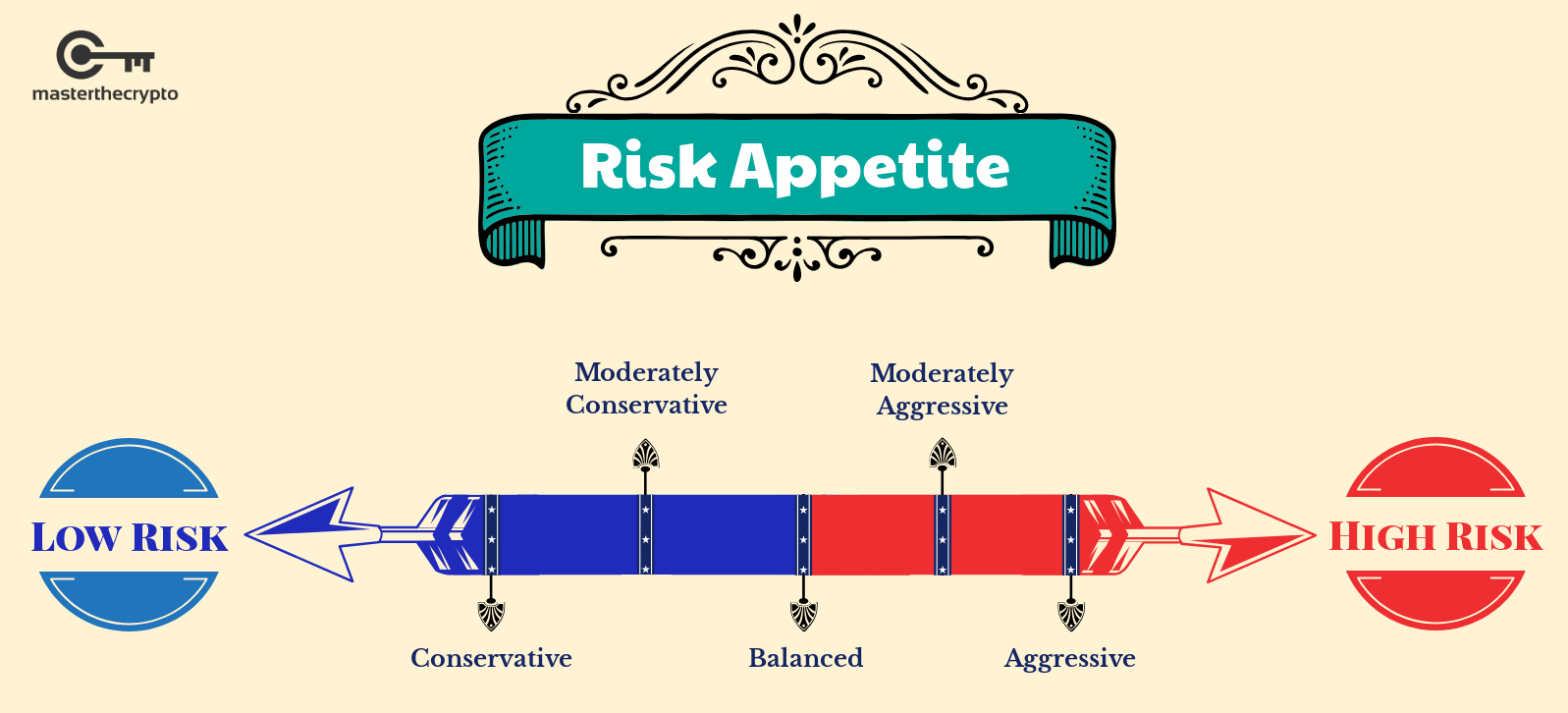
It must be mentioned that the level of risks that one chooses to undertake is highly correlated to the potential returns that he would acquire. In other words, a higher risk investment is associated with a greater probability of generating higher returns while a low-risk investment would yield a smaller rate of returns. This is called the risk-return trade-off.
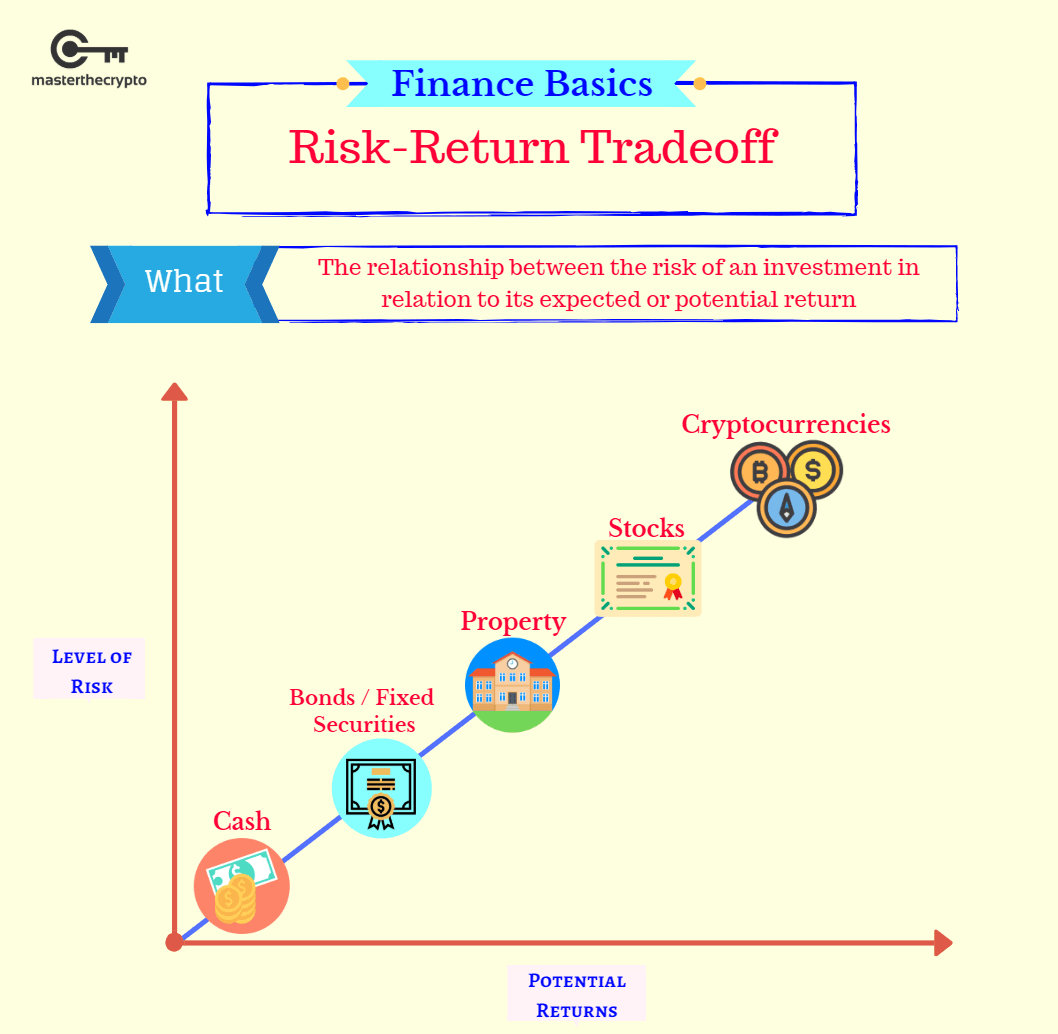
The varying levels of risks associated with different investments require you to understand your risk tolerance and then proceed to assess if the volatility of the asset you’re interested to invest in is aligned to your risk profile. Cryptocurrencies are the riskiest asset that you can put your hard-earned money on; it can give you a significant rate of returns but conversely, you must be prepared for the possibility of a huge loss, given the extreme volatility of cryptocurrency prices. We have already seen the aftereffects of the 2018 market crash where prices tumbled by close to 90%.
(See also: Is it Too Late to Buy Bitcoin and Is It too Late to Invest in Cryptocurrency?)
What Causes Volatility in the Cryptocurrency Market?
There are multiple reasons that contribute to the highly volatile and unstable environment. Let’s take a look at the major factors.
1) Infant Market
A young market backed by a new technology would be much more volatile than traditional investments that are mature and have been time-tested. Just as when the internet was a revolutionary back in the 1990s and Internet-related companies were generating significant rates of returns, the cryptocurrency market is currently in a similar cycle. New technologies take time to be perfected and adopted by the general masses, and there is a high risk of failure since there are many things that can go wrong. The possibility of future disruptions and adoption creates the perceived value in the market, which is primarily fueled by speculation due to the absence of solid, quantifiable metrics relating to the technology’s fundamentals.
Since cryptocurrencies haven’t reached mass adoption, its values is still fueled by hype and speculation. That is why they possess a high risk-return trade-off.
(Read more: A Guide To Fundamental Analysis For Cryptocurrencies)
2) Low Liquidity (relative to other markets)
Liquidity refers to the ease of buying or selling an asset in the open market. A market with a high volume of transactions with a vibrant number of market participants (buyers and sellers) is known as a highly liquid market. Unfortunately, the relative infancy of the cryptocurrency market means that its liquidity is currently very low. Looking at the trading pairs of many coins, you can see that the daily trading volume is nothing as compared to the values of other traditional investments such as the stock markets.

(Source: InsiderPRO)
A low liquidity market – such as the cryptocurrency market – is easily susceptible to sudden and aggressive fluctuations in prices, since a single large order can move the markets and send the price soaring or crash in an instant. This is because there is an insufficient number of market participants and orders in the market to buffer against potentially large orders that can move the markets. Additionally, market manipulation is extremely rife in a low-liquidity environment. The relatively low liquidity of the cryptocurrency market makes it a hotbed for volatile price swings.
(See more: Guide to Cryptocurrency Liquidity: How to Measure Liquidity & Trade Well)
3) Unregulated Markets
The cryptocurrency market is largely unregulated due to the complexity and the difficulty in regulating an open-source and decentralized technology. With an absence of regulations, there is an influx of bad actors that would manipulate the markets since there is no supervision. There have been frequent numerous reports on the entities explicitly manipulating the cryptocurrency markets. They can range from a coordinated pump-and-dump scheme by a collective to the manipulation of trading volume by cryptocurrency exchanges.
Market manipulation makes the general market unstable and highly volatile since the large orders created by these entities with the intent of manipulation would significantly cause sharp fluctuations in the market. This will induce panic and will lead to even more chaos and volatility, given that the cryptocurrency market is easily moved by news and sentiments.
(Read more: Understanding SEC Regulations on ICOs: What You Should Know)
4) Speculation
In an infant market with no regulations, the only thing driving the values of cryptocurrencies is speculation. Normally, the value of any asset is dependent on its utility and adoption. At the moment, speculation is rife since it is extremely difficult – almost impossible – to quantify the values of any cryptocurrency based on traditional fundamental analysis. Therefore, the best way to value any coin or token is to speculatively bet on the future use cases, adoption and traction of a coin instead of fundamental metrics which are currently unquantifiable.
The cryptocurrency has often been seen as a hotbed for speculation, which induces market instability. This creates an environment filled with tremendous risks.
(See more: Dangers in Cryptocurrency Investing)
Is Volatility Good?
Volatility means different things to different people in the markets. It all depends on a person’s tolerance for risk. A risk-averse individual would avoid high-volatility investments since they are more concerned about stability and preserving their wealth. Those who participate in the cryptocurrency market are considered to be risk-takers. In fact, close to 60% of Bitcoin buyers are aged between 15-34-year-olds. It is also interesting to point out that males significantly dominate the cryptocurrency market by over 70%.
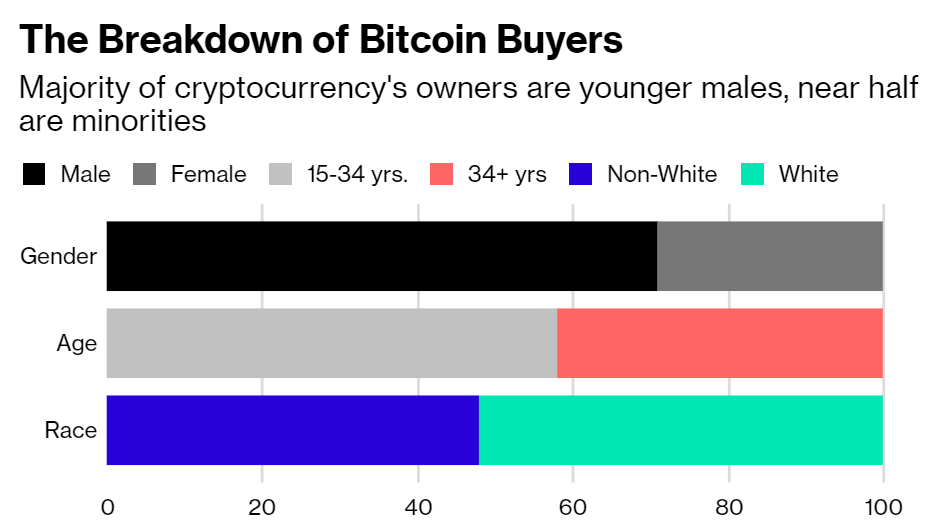
(Source: Bloomberg)
These statistics prove that young millennials are more attracted to high-risk investments such as cryptocurrencies, as compared to their older counterparts. A more volatile market generates bigger price moves, which in turn may provide greater opportunities to earn a tremendous rate of returns on investments. Lesser volatility equates to lesser price movements and therefore, a lower probability of earning the desired returns. The ability to potentially make significant amounts of money is perhaps the biggest draw for many investing in cryptocurrencies. The sheer volatility of the market allows for the potential of higher returns, presenting a great opportunity for traders and investors to exploit the volatility of the market to make money in any direction of the market.
(Read also: Guide on Identifying Scam Coins)
How Do We Measure Volatility?
There are several indicators in the market that measures the volatility of cryptocurrencies. Out of that, thereare a sizeable number of indicators that measure the volatility of only Bitcoin since it is the largest cryptocurrency in the market and represents a credible indicator for the rest of the market in general. Let’s take a look at the different volatility indicators:
1) BuyBitcoinWorldwide Bitcoin Volatility Index
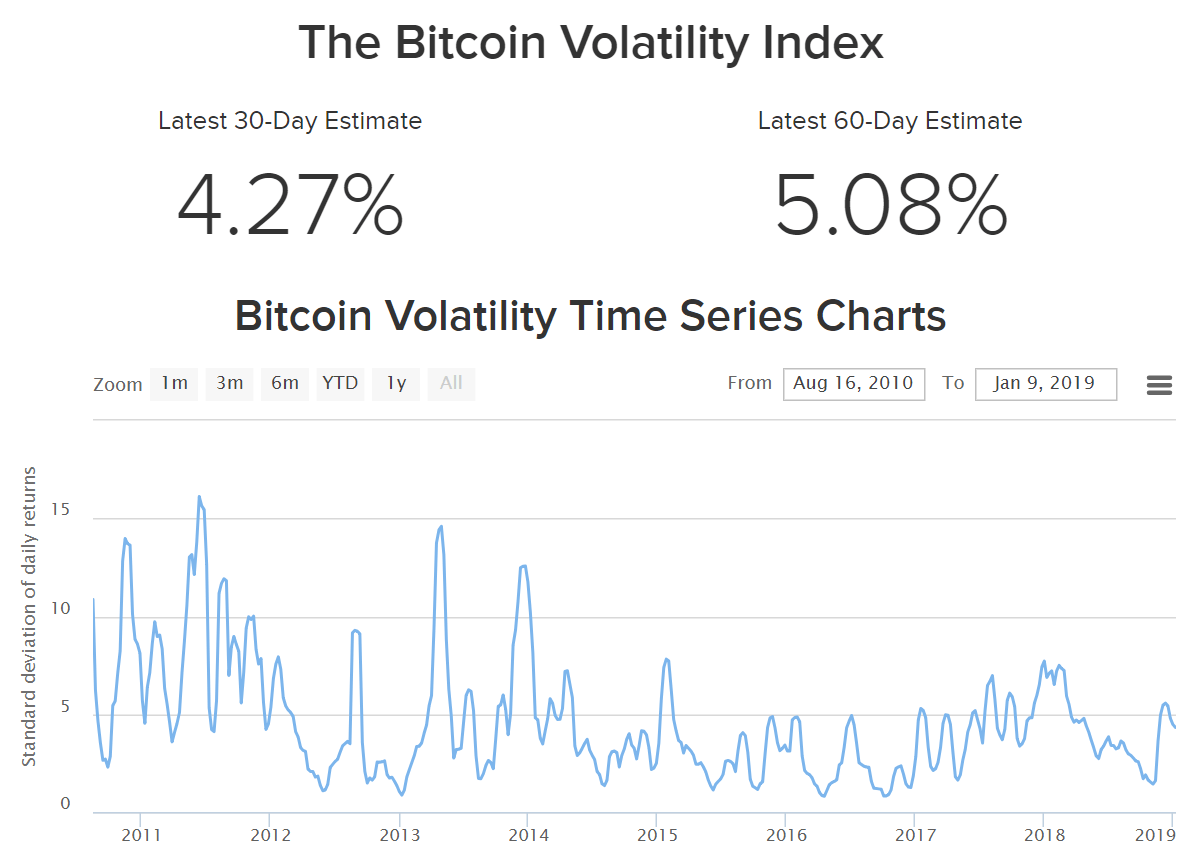
BuyBitcoinWorldWide provides the volatility for Bitcoin, measuring the standard deviation of Bitcoin’s prices. Standard deviation represents the variation of a set of values (in this case, prices). A higher standard deviation means that Bitcoin is more volatile since its prices are much more spread out.
2) Bitvol Bitcoin Volatility Index
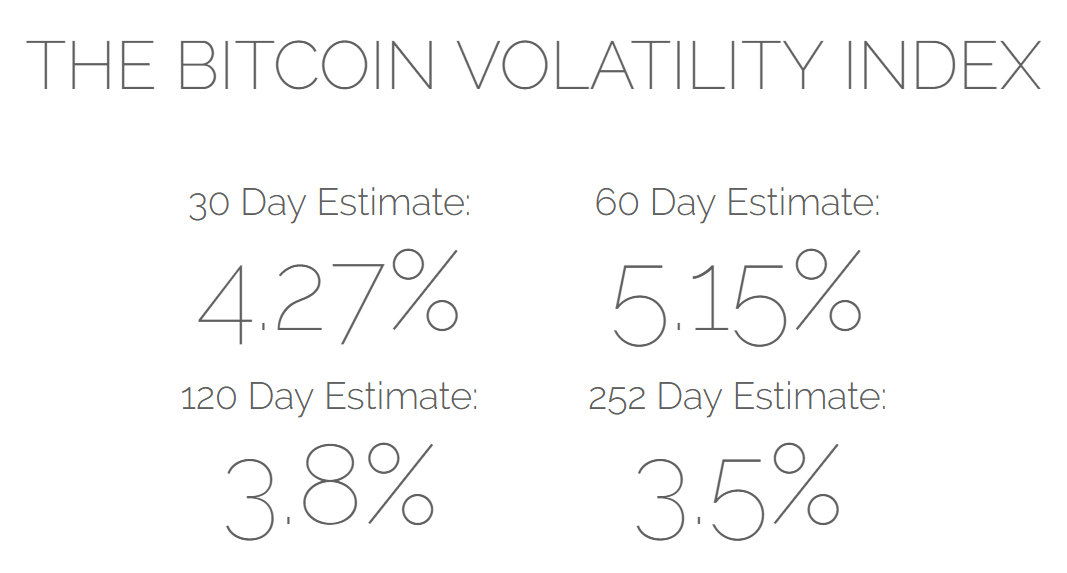
Bitvol.info tracks the volatility of Bitcoin on a percentage basis, as can be seen above. There are metrics for 30-day, 60-day, 120-day an252-dayay volatility measurements for Bitcoin.
3) Bitgur Volatility Index
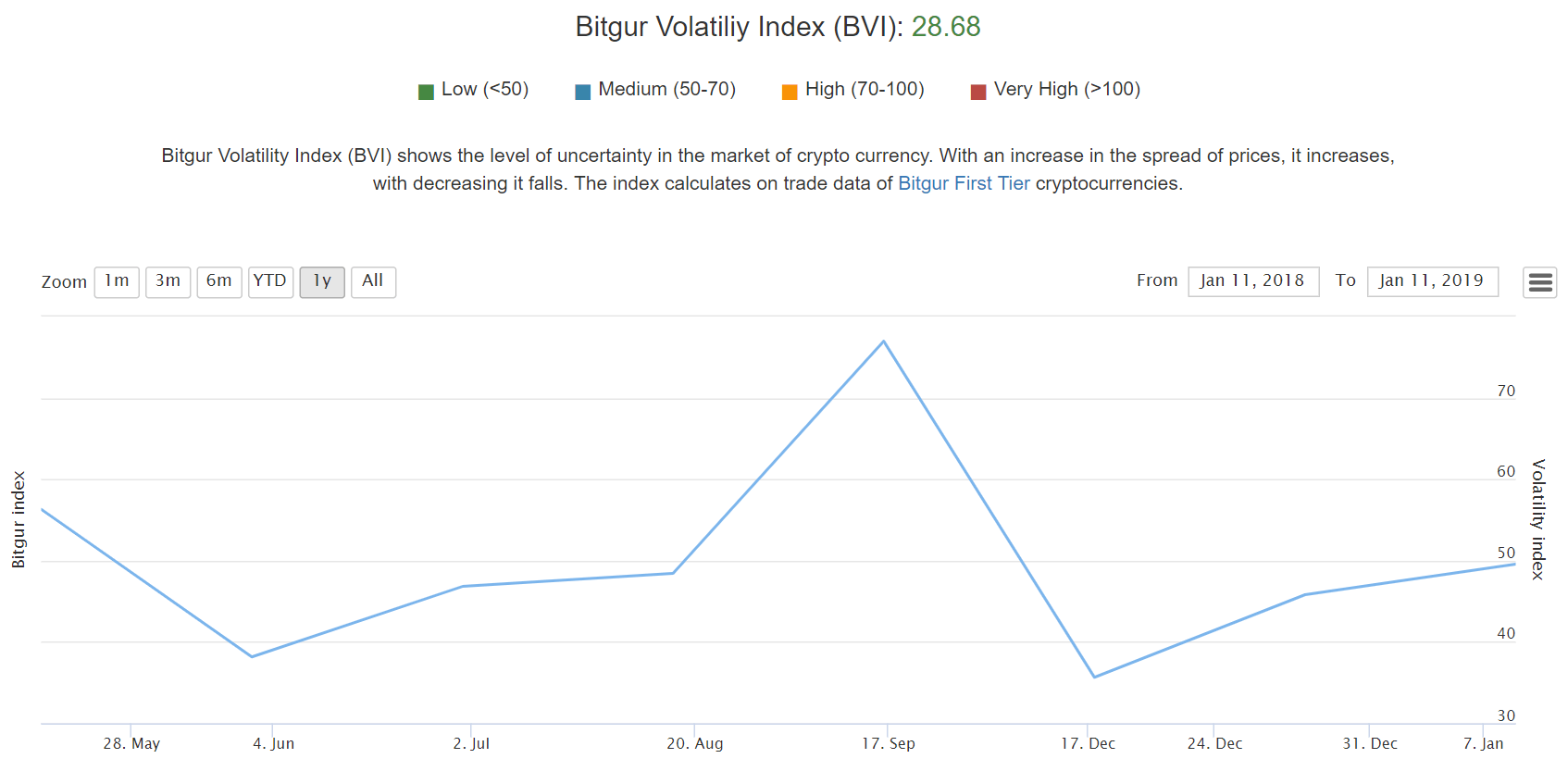
Bitgur volatility index measures the top 10 largest cryptocurrency according to market capitalization. It is one of the few index that measures the volatility of other cryptocurrencies. Unlike the first two indexes, the Bitgur index uses a range from 0-100; a volatility figure closer to 100% signify a higher level of volatility.
(See also: Guide to Forks: Everything You Need to Know About Forks, Hard Fork and Soft Fork
Summing It All Up
Volatility is an important market concept for any investor or trader to understand before engaging in different types of investments. The cryptocurrency market is a highly volatile market that is a double-edge sword; it has the potential to generate massive amounts of returns but you also face a high risk of losing a significant amount of capital. Ultimately, you should be aware of your own risk appetite to assess if you’re prepared for the worrying level of risks that the market has to offer.
(You might also be interested in: Cryptocurrency Guides: Comprehensive List of Crypto Guides For Beginners)
Beneficial Resources To Get You Started
If you're starting your journey into the complex world of cryptocurrencies, here's a list of useful resources and guides that will get you on your way:
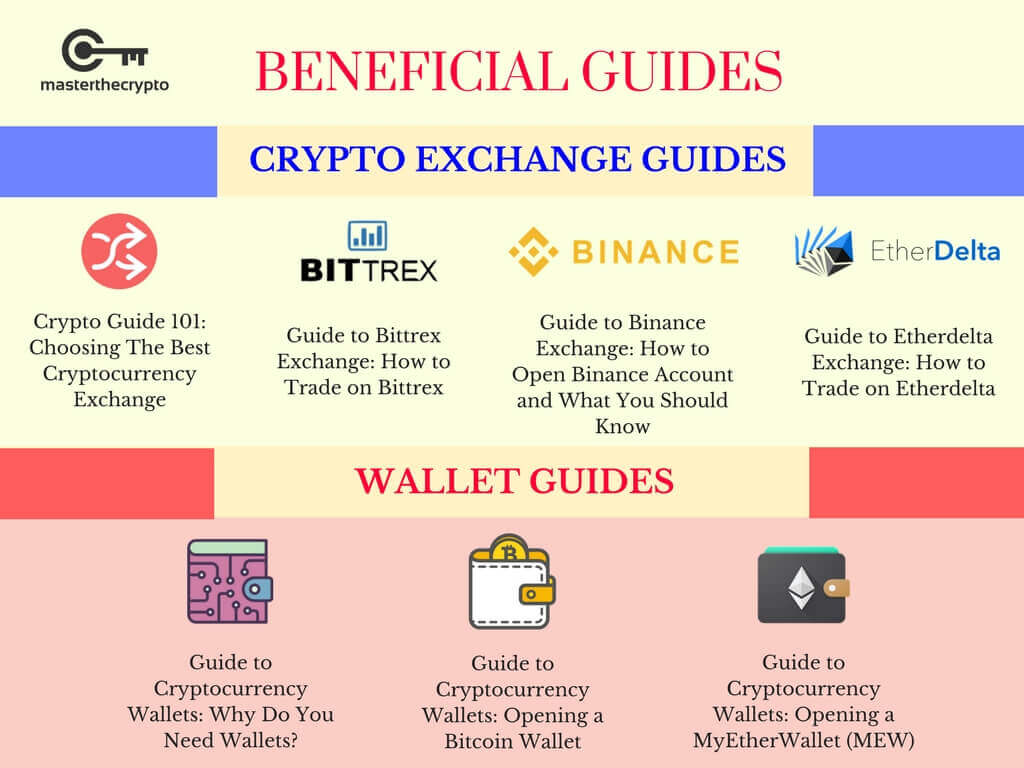
Trading & Exchange
- Crypto Guide 101: Choosing The Best Cryptocurrency Exchange
- Guide to Bittrex Exchange: How to Trade on Bittrex
- Guide to Binance Exchange: How to Open Binance Account and What You Should Know
- Guide to Etherdelta Exchange: How to Trade on Etherdelta
- Guide To Cryptocurrency Trading Basics: Introduction to Crypto Technical Analysis
- Cryptocurrency Trading: Understanding Cryptocurrency Trading Pairs & How it Works
- Crypto Trading Guide: 4 Common Pitfalls Every Crypto Trader Will Experience
Wallets
- Guide to Cryptocurrency Wallets: Why Do You Need Wallets?
- Guide to Cryptocurrency Wallets: Opening a Bitcoin Wallet
- Guide to Cryptocurrency Wallets: Opening a MyEtherWallet (MEW)
Read also: Crypto Trading Guide: 4 Common Pitfalls Every Crypto Trader Will Experience and Guide To Cryptocurrency Trading Basics: Introduction to Crypto Technical Analysis.
Sponsored Ad: Your dog deserves to be healthy & happy
Get our exclusive e-book which will guide you on the step-by-step process to get started with making money via Cryptocurrency investments!
You can also join our Facebook group at Master The Crypto: Advanced Cryptocurrency Knowledge to ask any questions regarding cryptocurrencies.

I'm Aziz, a seasoned cryptocurrency trader who's really passionate about 2 things; #1) the awesome-revolutionary blockchain technology underlying crypto and #2) helping make bitcoin great ‘again'!

